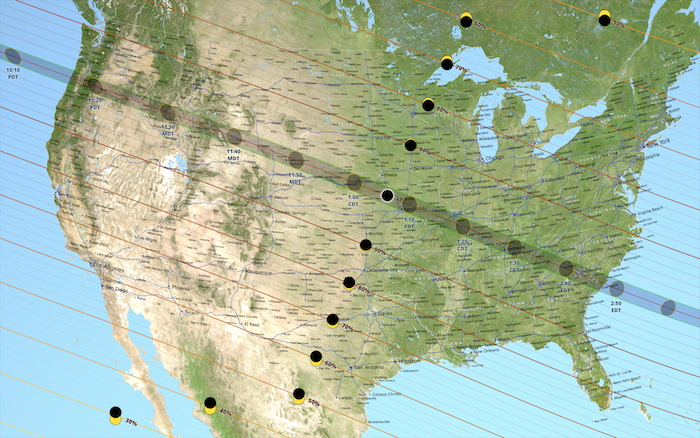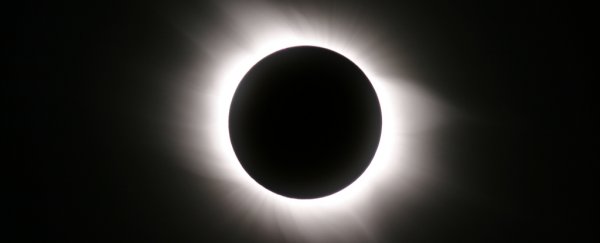You know the drill. On Monday 21 August the contiguous United States will experience a total solar eclipse - the first time the path of the Moon's shadow will travel across the entire country since 1918.
There will be hype, there will be science, and there will be what we estimate to be about a gazillion photos and videos of the event. Whether you're going to see it live or not, here's everything you need to know to be ready.
Here's where it will strike
If you're planning to be physically present on the path of totality, we're sure your travel plans have already been laid out well in advance.
But just in case, here's where you can find out where it's going to hit and what times to look out for, depending on your location.
 NASA
NASA
Here's what you need to bring
Everyone's been talking about eclipse glasses, and they are indeed the single most important piece of equipment you're going to need to experience the sight in full glory, especially before and after totality hits.
But there's other stuff you may forget to chuck in the car in all that excitement - like binoculars, picnic gear, or even sunscreen. So we've prepared a handy list of the most important things, with some solid guidance from experienced eclipse viewer and astronomer Amanda Bauer.
If you're planning to take photos or videos of the eclipse, make sure you bring the right filters and choose the right settings to avoid frying your expensive camera.
Here's what to watch out for during totality
Everyone knows it gets weirdly dark when the Moon completely blots out the Sun in our sky.
But you can also expect the weather to go weird. The 'eclipse wind' phenomenon puzzled meteorologists for some 300 years, until they finally came up with the most plausible explanation yet a couple years ago. Spoiler: it's to do with variation in our planet's boundary layer.
Another fascinating aspect of the strange totality darkness is its effect on animals. This has not been studied much, because it's tricky to gather enough data on potentially weird animal behaviours triggered by the eclipse. Researchers are hoping that this time citizen scientists will help out with some observations.
Here's what scientists will be learning from this eclipse
This Monday is not just going to be a fun day for the whole family and a baffling experience for folk who refuse to accept Earth is not flat.
Eclipses are also great for studying the celestial bodies involved, and this time NASA will be using converted bomber planes to get a chance at mapping the Sun's corona, making new observations of Mercury and near-Sun asteroids dubbed Vulcanoids.
A team of NASA scientists also recently participated in a Reddit Ask Me Anything session, and we must say some of the questions people asked them were a bit on the wacky side.
Oh, and here's what's not going to happen
Some headlines would have you believe that the Great American Eclipse is the precursor to a Nibiru apocalypse. Rest assured, that's not going to happen.
Here's what to do if you can't see it in person
The vast majority of the world's population does not reside in the US and will not be there to see this eclipse live. But fear not, you can still fully expect to have your social media flooded with footage.
And luckily, if you do want to witness it live from the comforts of your own home - possibly even on the other side of the globe - there will be a livestream. And not just any livestream! This one will be captured at an altitude of 30 kilometres (100,000 feet) above Earth's surface.
Curiously, here's what it's like to see it from a plane
In 2016, a video of what an eclipse looks like from a plane window did the rounds, with people excitedly losing their shit in the audio accompanying the view.
We get it, though - people go to great lengths and pay great money to chase the totality in a plane, especially because by using this trick it's possible to extend the viewing time of the event by several minutes.
And finally, here's some info in case you miss this one
Despite the extreme excitement, we understand not everyone will get a chance to catch the Great American Eclipse. But don't worry, the next total one will touch the US in 2024, although unfortunately it won't cross the entire country again.
And for longer-term planning, NASA actually has calculations on the next 1,000 years of eclipses, so you can just peruse the list and find the most suitable one depending on your location in the world.
